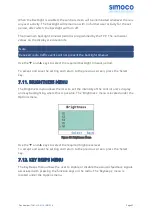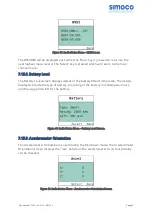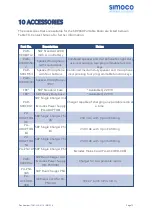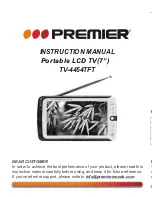
9 DIAL STRINGS
The dial plan specifies the sequence of key-presses that may be entered by the user via
the SDP660 to initiate connectivity to a remote party using another terminal in the
network. Additionally, dial strings may be entered to alter a terminal’s behaviour or
configuration without initiating a call.
Dial strings may be entered via the keypad or stored in the contacts lists.
9.1. CALL INITIATION FORMATS
The dial string specifications shown below in Table 6 are used to initiate calls to
remote parties.
Type Dial String
Notes
Individual
Call
Nnnnnnn#
nnnnnnn may be less than seven digits for abbreviated dialling
(more significant digits come from dialling unit’s own address).
All Call –
All Units
******#
Table 6: Call Initiation Formats.
9.2. CALL MODIFIERS
Dial string modifiers are used to alter the attributes of a call. They are prefixed to a
dialled number. Modifiers 1, 5, 6, 8 and 9 may be combined. 8 and 9 are mutually
exclusive, eg: #81*nnn…#.
Call Type
Dial String
Notes
Status Call
#0ss*nn…n#
ss = status number
Broadcast Call
#1*gg…g# gg… = TGID destination, may contain * digits
Open Channel Voice Mode #5*nn…n#
Force Talk Group Service #6*nn…n#
Highest Priority Call
#8*nn…n#
Places the highest priority call (Priority 3)
Emergency Call
#9*nn…#
Table 7: Call Modifiers.
9.3. MS BEHAVIOUR COMMANDS
These dial strings don’t initiate a call, they modify the units configuration or behaviour
in some way.
Doc Number:
TNM-U-E-0114 ISSUE 1.4
Page
71







































